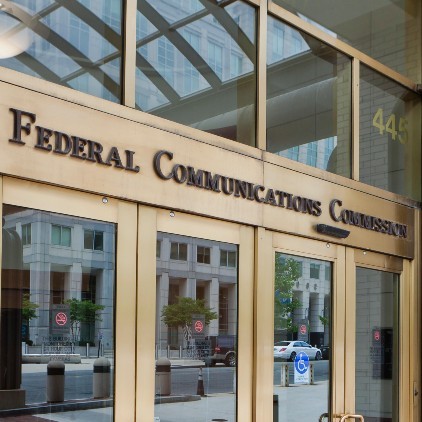A new federal program and a new Supreme Court ruling both put more power into state regulators' hands. How the US telecom industry handles that development remains to be seen.

Two major developments in the US telecommunications market – the BEAD funding program and the Supreme Court's recent EPA ruling – appear to be putting more emphasis on state-level regulations.
That's noteworthy for a number of reasons, particularly given the historically muscular role that federal agencies have taken in the US telecom industry following the breakup of AT&T's Bell monopoly in the 1980s.
The trend is also noteworthy in the wider context, given the increasingly prominent role that state legislation can take in everything from gun laws to marijuana to abortion.
It's unclear exactly how telecom operators may need to adjust, considering their business is – by its nature – a mostly local endeavor. Nonetheless, some telecom players have begun responding, whether that involves hiring more state lobbyists or withdrawing from some state-level legal battles.
Net neutrality
Two separate but important developments are pushing telecom discussions down to the state level.
First, the US Supreme Court recently issued a ruling that essentially limits the Environmental Protection Agency's (EPA) authority to regulate power plant emissions. "The ruling is the product of a longstanding campaign by some conservatives to curtail or dismantle the power of the so-called administrative state, the system of agencies that regulate wide areas of the economy," wrote the New York Times.
In telecom, the ruling could impact the FCC (which sets basic telecom regulations) or the FTC (which, among other things, reviews mergers and acquisitions).
Figure 1:  (Source: B Christopher/Alamy Stock Photo)
(Source: B Christopher/Alamy Stock Photo)
The analysts at New Street Research argued that the Supreme Court's EPA ruling could make it easier for telecom companies and others to overturn federal rulings in court. And broadly, they wrote that the ruling represents "a shift of power from the federal government to the states."
While the ruling could eventually have widespread implications, the most pressing may be in regards to net neutrality. President Biden has said he intends to reinstate the net neutrality guidelines first imposed during the Obama administration and then scrapped during the Trump administration. But the Supreme Court's recent ruling will likely make that more difficult. However, the ruling also appears to pave the way for states to enact their own net neutrality guidelines, as California has already done.
$42 billion
The second development involves the NTIA's $42 billion Broadband, Equity, Access, and Deployment (BEAD) guidelines. Those guidelines will essentially put federal spending on the digital divide into the hands of state regulators.
That is a definitive change from the FCC's prior strategy for such spending. The agency's recent RDOF and CAF II programs represented a centralized, nationwide distribution of cash for networks in rural areas.
Already, there are plenty of concerns around the NTIA's guidelines, including how local telecom regulators might handle the program's many requirements. For example, Doug Dawson of CCG Consulting recently pointed out that "states are specifically tasked with reaching out to unserved and underserved communities, including underrepresented and marginalized groups. States are also required to document the outreach process."
Those hearings could involve a wide range of topics, including those that would be important to telecom network operators. "If a county government believes the state won't allow grants for government entities, this is the place to lodge a protest. If a city wants to make sure that low-income neighborhoods are not forgotten, this is the forum to give that voice. If a community is worried that the FCC mapping or unresolved RDOF grants will leave them behind, this is the forum to be heard," Dawson wrote.
The NTIA's BEAD spending is also contingent on the FCC developing nationwide broadband maps, a process that's expected to stretch throughout this year at least. After that, there's little doubt that telecom operators of all shapes and sizes will begin pursuing funding at state and local levels, likely working to modify the rules to their desires.
The path forward
Although the Bell monopoly was broken up in the 1980s, the nation's telecommunications sector remains dominated by a relatively small number of massive players, whether that's T-Mobile, Comcast or Verizon.
It's still unclear how each of these massive companies plans to navigate the quickly shifting sands of telecom policy. Already they've withdrawn their challenge to California's net neutrality law after arguing against a patchwork of state regulations. But they've also notched some wins, having faced down objections from states regarding federal guidelines for small cell installations.
Nonetheless, if overall trends continue, one state's telecom structure might evolve very differently from another state. How nationwide companies like AT&T decide to handle that landscape remains to be seen.
Related posts:
— Mike Dano, Editorial Director, 5G & Mobile Strategies, Light Reading | @mikeddano
About the Author(s)
You May Also Like











